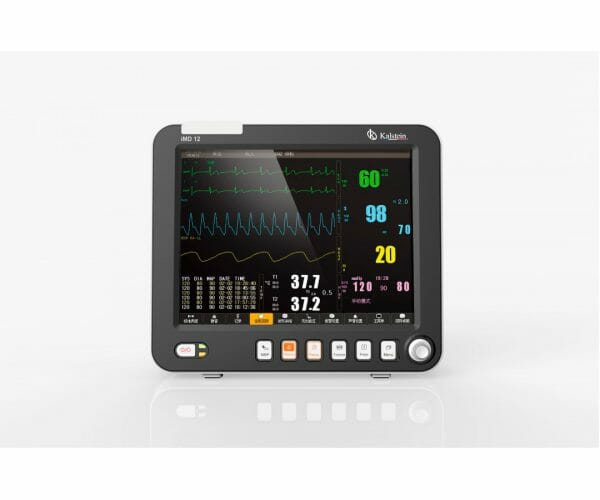A patient monitor is an electronic device used in hospitals and clinics to monitor vital signs of patients who are in critical condition or who must undergo continuous medical surveillance, in case any alteration in the values of these occurs; among the most common vital signs assessed with this device are: heart rate (ECG), respiratory rate (RESP), non-invasive blood pressure (NIP), pulse (PR), oxygen saturation (SpO2), temperature (TEMP), CO2 and invasive blood pressure (PAI).
They are equipment of great medical use, especially in patients undergoing anesthesia, medicines or any other treatment that determines the need for blood, variation in medication or volume replacement, such as a plasma expander.
How does a patient monitor work?
A patient monitor allows detecting, processing and displaying the physiological parameters of a patient connected to this equipment. This device has a series of visual and sound alarms, which in the event that any of these parameters is below or above normal for the patient’s age, or any other adverse activity is generated, an alarm is triggered to warn the health personnel.
A patient monitor, depending on its configuration, can measure and display more than 20 different types of parameters from sensors and devices that are placed on the patient.
How to use patient monitors
Patient monitors can be used in different areas of use, they are essential equipment in intensive care units for both neonates and adults. They are also used in operating theaters, hospital and emergency rooms, regardless of medical specialty. They are fully applicable to both pediatric and adult patients, as well as patient monitors that are used for a specific application such as maternal and fetal monitors and anesthesia monitors, the former are used to monitor the vital signs of the mother and fetus, when checking uterine and fetal activity, and the latter are used together with anesthetic gas analyzers, as they have the property to determine the patient’s vital signs and show information about the gases administered during an operation.
It is indicated mainly to follow up patients with arrhythmias, hypertensive, with low saturation levels, is delicate and in postoperative states. As this medical team carries out a continuous measurement of the patient’s health condition and in turn allows to detect situations outside the normal or desired values facing unfavorable scenarios. When using a patient monitor it is very important to ensure that the electrical network of the site complies with safety standards and avoid placing the monitor near sources that have magnetic fields, as well as avoid bending the ECG cables and check that no liquid enters the device.
What do we offer you in Kalstein?
Kalstein is a company MANUFACTURER of medical and laboratory equipment of the highest quality and that have the most advanced technology at the best prices in the market, so we guarantee you a safe and effective purchase, knowing that you have the service of a solid company and committed to health. This time we present our patient monitor YR 02175. It is a semi-modular monitor of medium and high complexity, specially designed to be used in ICU, Pavilion and Emergency in Adult, Pediatric or Neonatal patients. Among its main characteristics we find:
- The model features a large 12.1-inch TFT color LCD with anti-glare system and Touch Screen function, plus a backup battery of up to 3.5 hrs.
- It can also be connected to a monitoring station and incorporates protocol to connect to HIS, CIS, LIS and PACS systems, and with port for 2G SD memory card.
- Basic parameters included: ECG, ST, Arrhythmia, Respiration, 2 Temperature, SpO2, Noninvasive Pressure, PPI.
- Additional parameters and options: SpO2 Masimo (Rainbow), SpO2 Nellcor, 2 to 8 Invasive Pressures, Analysis of Anesthetic Agents, CO2 (MainStream, SideStream, MicroStream), FiO2, Invasive and Non-Invasive Cardiac Expenditure, Printer Module. HERE
For more information we invite you to take a look a HERE


